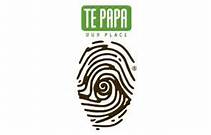Te Papa Tongarewa
New procurement model is transparent and provides better value
 Te Papa has transformed the way in which it purchases freight to transport its national treasures overseas.
Te Papa has transformed the way in which it purchases freight to transport its national treasures overseas.
Until the new model was implemented, freight arrangements were procured through a single broker. The organisation was engaged for every freight requirement and billed Te Papa for the total cost.
“But we just didn’t know if we were getting the best deal. There are only five companies in the world working in this area, and I realised the model we were using was not good for us as the purchaser,” says Lynda Bradley, Project and Procurement Manager at Te Papa.
“The broker would arrange the movement of our exhibitions, work out the safest route, work with Customs and clearance, do the logistics,” she says. “But they would not disclose their commission or how they procured that service, so we didn’t know if they were working within the Te Papa procurement rules.”
Mrs Bradley, who has been in the role for two years, was already making enquiries about the efficiency of the system when an alarming fax from their broker was sent to their courier company in error, which then sent it on to Te Papa.
Effectiveness is about value. It’s about driving better outcomes for New Zealanders. Efficiency is having a process that is fit for purpose.
The fax revealed that the brokers were loading a 60% commission on to a freight service. This was a real wake-up call for Te Papa. “There was just no visibility.”
Where to go from that point, however, posed some questions. Mrs Bradley says that there was a lack of specialist procurement knowledge within the organisation. She says the turning point was her admitting she just did not know how to unravel the problem and set up a new model by which the museum could purchase freight and get a better deal.
Despite some protestations about the cost, an external procurement specialist was engaged who assisted them in constructing a new model that would protect Te Papa from such exorbitant mark-ups.
Now, when Te Papa requires freight services, the contract is put up for tender. Each leg of a tour must be individually priced, including each service within that. Te Papa will often use a mixture of service providers for one touring exhibition. As a result, hundreds of thousands of dollars are being saved. On just one leg of the tour of E tu Ake, the new model saved Te Papa $147,000.
Mrs Bradley says they have taken the power back and are looking at getting more value for the organisation.
“Now we have transparency of process, we know a company is working on our behalf, and we know what they are doing.”
Despite Te Papa being a “tiny player” in the world of museums and freight procurement, the new model is considered unique and innovative. Mrs Bradley was invited to present it to the Chartered Institute of Purchasing and Supply Forum in October.
Mrs Bradley says there is such a lot of money to be made in the procurement of museum objects and fine art freight, that overseas, where these contracts are worth millions of dollars, what Te Papa did to the system could be risky.
Mrs Bradley attributes the success of the change to admitting that they didn’t know how to solve the problem, and therefore needed expert advice. “Know what you know and what you don’t,” she says. Sound management she could trust and the tenacity of the team has also been crucial to the process.
Although it has been a long and complicated process, Mrs Bradley says they still have a long way to go. “But we have completely changed the model for purchasing international freight of museum objects and fine art.”
“The new model is just bringing better value to Te Papa without compromising the quality by which we move these national treasures around the world.”
Based on an interview with Lynda Bradley, Project and Procurement Manager, on 21 June 2012.
Disclaimer: This case study is the entity’s story – we have not audited the facts but have confirmed with the entity that its story is fairly represented.
